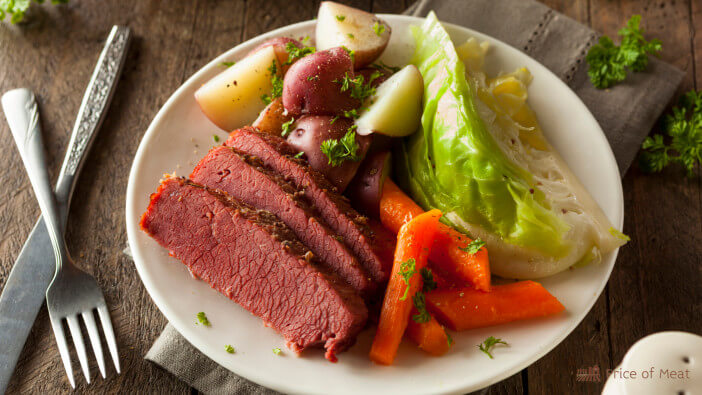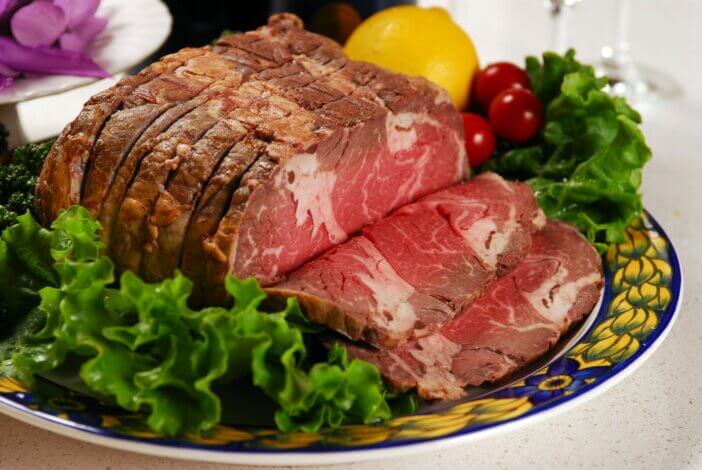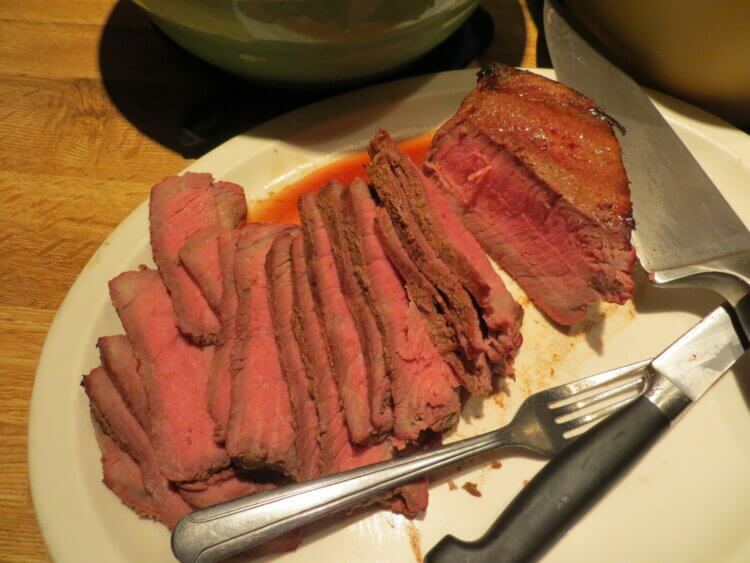How to Save a Tough Corned Beef

Saint Patrick's Day allows everyone to celebrate all things Irish. Corned beef is traditionally associated with the Irish because many Irish immigrants to the United States ate corned beef. However, if not cooked correctly, corned beef can be very tough. Here are several ways to cook corned beef so that you will not be left wondering, "Why is my corned beef tough?"
Four Ways to Tenderize Your Corned Beef

Cook in Water on Low Heat
Corned beef starts out as a brisket which is a very tough piece of meat. This meat must be properly cooked, or it will turn out tough every single time. If you've tried to dry roast or fry brisket, it is no wonder the meat is tough as shoe leather. You are going to have to change things up and try something else. But take heart–you probably haven't completely ruined your corned beef.
Take the piece of meat and put it in a large stock pot with chopped onion and a head of cabbage that has been cut into 4 equal pieces. Cover the meat and cabbage with water and put it on the stove over medium heat. Bring it to a boil and then lower the heat to simmer. Cover the pot with a tightly fitted lid. Simmer the meat for 2 to 3 hours, and it should be much more tender.
Use a Pressure Cooker

Pressure cookers are amazing gadgets for cooking meat quickly and tenderizing tough pieces of meat. In the past, pressure cookers were a little scary since they could explode if not used correctly. However, modern pressure cookers like the Instant Pot can safely and quickly cook and tenderize your corned beef.
Add an onion to the bottom of the Instant Pot and place your 3 to 4 pound, rinsed and soaked corned beef brisket on top of it. Sprinkle the seasoning packet on the meat and pour 4 cups of water around the meat. Seal the lid and set the pressure level to high, cooking the corned beef for 80 minutes.
Release the pressure when the time is up by opening the valve.Take the beef and onion out of the pot and set the meat aside to rest. Remove 2 cups of the cooking liquid and add 4 large peeled and chopped carrots, a quartered head of cabbage, and a pound of baby potatoes to your Instant Pot. Put the lid back on and cook the veggies on high pressure for 5 minutes. Release the pressure by opening the valve. Slice your corned beef against the grain and serve.
Let It Rest
The instructions to allow meat to rest before slicing are actually really important and not just a suggestion. When you cook a piece of meat, the moisture in it migrates to the outer portion of the meat closer to the surface. If you cut the meat immediately after cooking it, the moisture will all leak out, leaving the center of the meat dry, hard, and tough.
When you let a piece of meat rest, it allows the moisture to be redistributed throughout the muscle fibers. Since corned beef is such a large piece of meat, it requires a long resting time.
Corned beef should rest for about an hour after cooking. Put the meat, wrapped in a double layer of aluminum foil, in a good quality cooler with the lid on. Layer a couple of bath towels over the meat while it is resting. This will keep the meat hot as you wait for it to rest.
Add More Water
If you allowed too much of the water to evaporate in cooking, this can make the corned beef tough (or even too salty). Add extra water to the pot and cover the pot with a tightly fitting lid. Put it on the stove and let it come to a boil. Then, turn down the heat.
You do not want to boil the meat; you just want it to simmer. Cook the meat for about half an hour and test the meat with a fork. If it's still tough, cook it for 30 to 40 minutes longer.
Why Does Corned Beef End Up Tough Sometimes?

Corned beef is made from the brisket of a beef steer. The brisket is found in the lower chest, where the front legs connect to the trunk of the body. This muscle group gets a lot of exercise, so the muscle is tough and strong, interlaced with connective tissue. However, if you cook it correctly, the connective tissue breaks down into gelatin, making the meat tender and tasty.
How Do You Know When Corned Beef Is Done Without a Thermometer?
Everyone knows that the gold standard for doneness with meat is to use a meat thermometer and cook it to at least 160 degrees for safety, but even better is to cook it to 190 degrees Fahrenheit for tenderness.
Corned beef often has a reddish color even after it is cooked. Therefore, if you are checking out your meat, and it is still kind of pink, don't worry that it's undercooked. First, keep in mind that you should cook a corned beef for about an hour per pound. The meat should also be soft, tender, and easily shredded with a fork when it's completely cooked.
Can I Fix Tough Corned Beef After It Has Cooked?
The answer to this common question is, "It depends on why it is tough." Undercooked corned beef is often tough, and if you undercooked the beef, you can tenderize it by returning it to the pot, covering it with water, and simmering it for longer. Most of the time, try cooking the meat longer in water to tenderize it (no need for a tenderizer).
However, if you cooked the meat at too high of heat, such as boiling it or trying to dry roast it at too high of a temperature, the brisket muscle may have seized up, and it is too late to salvage it. You can try to put it in water and cook it longer to tenderize it, but it may not work. To keep your corned beef tender, never cook it at a temperature higher than 250 degrees Fahrenheit.
Should You Cover Corned Beef When Cooking?
Corned beef should always be covered when it is cooking. A tightly fitting lid will not only help keep the temperature stable, but it will also trap the moisture in the pot, keeping the meat from drying out. Since corned beef should be completely covered in water as it cooks, a tightly fitted lid will keep the cooking liquid from boiling away.
schneiderolve1987.blogspot.com
Source: https://www.priceofmeat.com/2721/tenderize-corned-beef/
0 Response to "How to Save a Tough Corned Beef"
Post a Comment